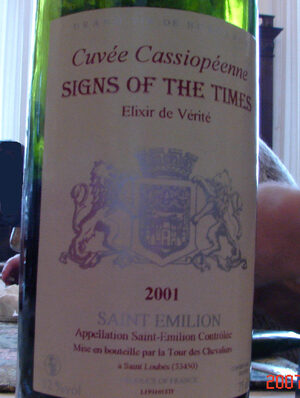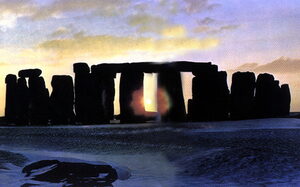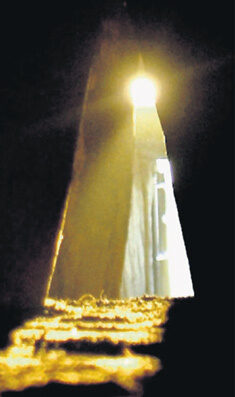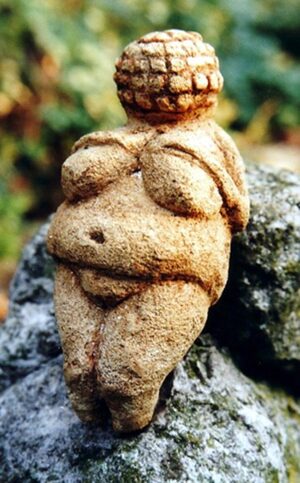
|
| ©Sott.net |
| A Gift from SOTT's French Editors (Thanks to all of you! It was excellent wine!) |
I'm sitting here at my desk, Christmas Dinner for 17 is over and done with and the leftovers are all covered and arranged on the kitchen table. The dishes are washed and put away, and everyone but me and Ark are watching the Christmas movies. We are enjoying a second glass of a fine French wine - a gift from SOTT's French Crew. So far, it has been a relaxing and pleasant experience except for the one time I had to go out for some last minute items for dinner and had to deal with what the rest of the world is doing for Christmas... it wasn't pretty, I tell you! I was so glad that I don't do that anymore.
Here at SOTT, we have given up the commercial part of Christmas. We all decided that the ghosts of Christmasses past would no longer haunt us and we would take from the holiday only those things we like and we simply would not do anything we didn't like or couldn't find a valid reason to do. And so, we have "streamlined" Christmas. We like to have a tree because we like to collect the pretty ornaments we put on it; each one reminds us of someone or some pleasant event from the past. But, we don't like killing trees, so we are happy with an artificial one; the current model has been in service for 12 years now and there's at least another 10 years of use in it yet! We like a lot of lights on our tree and I go in for specialty ones like bubble lights and lights that look like icicles. We also decorate a bit outside (nothing spectacular) for our neighbors to enjoy, and, other than a convivial feast, that's about the extent of what we consider Christmas around here.

|
| ©sott.net |
| The same tree every year never gets boring when you get to arrange the ornaments a new way every time... It's rather like a lesson on life. |
More importantly, we have a different internal perspective about Christmas. Christmas actually falls on the ancient pagan celebration of the Winter Solstice (and that was by nefarious design of the Catholic Church), and we think that this ancient festivity is well worth celebrating... but not because we, for a moment, consider it the "birthday of Jesus."
A very long time ago humans recognized the winter solstice and began heralding it as a turning point -- the day that marks the rebirth of the light, the return of the sun, and we think that this is a worthy activity and a good reason to make merry, cheer each other up and remind ourselves that it is always darkest before the dawn.
We also consider the fact that, in the grand, cosmic scheme of things, being in a celebratory frame of mind at this moment when our Sun is in a dynamic dance with the solar syatem, might make a difference for the Universe! Who knows what it might REALLY mean, to celebrate the standstill of the sun and the slow return to longer days and shorter nights in the Northern hemisphere? For all we know, there IS a cosmic energy that we participate in if we look at it the right way?

|
| ©sott.net |
| I would like to report that I scored the biggest turkey in the entire department thanks to the kind efforts of my butcher. |
Many ancient cultures built their greatest monuments - tombs, temples, cairns and sacred observatories -- so that they aligned with the solstices and equinoxes. Stonehenge is a perfect marker of both solstices.

|
| ©Unknown |
| Winter Solstice at Stonehenge |
Newgrange, a magical megalithic site in Ireland estimated to be older by centuries than Stonehenge, older than the Egyptian pyramids, was built to receive a shaft of sunlight deep into its central chamber at dawn on winter solstice. The light illuminates a stone basin below intricate carvings -- spirals, eye shapes, solar discs. Although very little is known about how Newgrange was used by its builders, marking the solstice was obviously of tremendous spiritual import to them.

|
| ©Unknown |
| Winter Solstice at Newgrange |
Maeshowe, on the Orkney Islands north of Scotland, also admits the winter solstice setting sun. It is said to be "one of the greatest architectural achievements of the prehistoric peoples of Scotland."
Hundreds of other megalithic structures throughout Europe are oriented to the solstices and the equinoxes. Christmas was grafted onto the winter solstice some 1,600 years ago and the observance of Christmas spread across the globe. Along the way, we lost the deep connection of our celebrations to a fundamental seasonal, hemispheric and possibly even cosmic, event.
I think it is time to regain that connection.
In many cultures, customs practiced at Christmas actually go back to pre-Christian times and involve divination: the re-starting of Time and laying the template for the future. Many people believe that what you are doing at the time of the beginning of the New Year (for that is what the Winter Solstice really is), lays the pattern for the coming year. If you are happy and relaxed and with people you love, you can be sure that this is what the New Year will bring you. If you are over-stressed, inundated in commercialism and going into debt to "keep up with the Joneses," then that, too, is the pattern for your coming year. So, people ought to be very particular about what they are doing during these Winter Holidays!
Many Christmas Carols are also re-worked Pagan songs... for example those that refer to holly and ivy. The holly and ivy symbolized male and female, and the songs narrated their often rowdy vying for mastery in the forest or in the house. The older meaning was, of course, the Hieros Gamos - the sacred marriage that ensured the continuity of the Universe.
So, the next time you hear"the Carol of the Bells," just remember that it is a remnant of the pre-Christian winter solstice celebration in the Ukraine. The Ukrainian carol called "Shchedryk" has the same melody as the Carol of the Bells, but different words. The word "Shchedryk" means the "Generous One". It refers to the god of generosity, the Dazh Boh - the Giver God, which is the sun. And from there, it isn't hard to think of the Mother Goddess of the cosmic energy, the giver of all good things...
As it happens, the Winter Solstice of 2007 was on Dec 22, at 6:08 am Universal Time, so it's already a done deal. And, as I mentioned above, our dinner is already over and everyone is looking for a place to relax and enjoy the feeling of abundance of love and sharing. But, there is something I would like to say to all of our readers who think that this work we do - observing the cold, hard facts of our reality is so grim and relentlessly depressing.
If you are not happy with the way your Winter Solstice celebration is going, next year you might like to just give it up... Tell people that you no longer celebrate Christmas in the "new" way, you are returning to the "old way"! After all, it is Judao-Christianity and all that underpins it that has brought the Earth to the position it is in today. And I think that most of you will agree with me that some days you just wonder what the heck is going on and when will all the madness end?
Understand that this is a necessary chaos that exists at the end of any world age. What we all need to do is to create within ourselves the ability to observe and interact with reality AS IT IS, while still maintaining our equilibrium. In this way, we become like a tree that is strong and well rooted in the earth, while still stretching its branches toward heaven.
One of the very ancient aspects of the idea of Celestial Archetypes was the concept of the "Axis Mundi", or "Center of the World". This was a point where Heaven, Earth and Hell met and where Time was abolished and passage to one region or another was possible. At any point where there was a convergence of the three realms, a "temple" was considered to exist whether one was constructed there or not. This center was the zone of the sacred - of absolute reality - and was symbolized by trees, fountains, ladders, ropes, and so forth. You can become this Tree, Temple, Zone of the Sacred.
It has been theorized that religious rituals were developed in an attempt to "connect" to this Divine Model or archetype but "rituals" or "re-enactments" are not necessary; all that is needed is REPLICATION. (Keep in mind that the myths are only a much later formulation of an archaic content that postulates an absolute reality, or levels of reality, which are extra-human or hyperdimensional.)
The key to the ancient myths and rituals is that, in nearly every case, there is a conception of the end and the beginning of a Cyclical Temporal Period; and, coincidental to this idea, is an expulsion of demons, diseases and sins. These ideas are demonstrated by the ubiquitous carnival celebrations of the New Year.
...The annual expulsion of sins, diseases, and demons was basically an attempt to restore - if only momentarily - mythical and primordial time, "pure" time, the time of the "instant" of the Creation when everything was pure and "good". Every New Year was an opportunity to begin time anew, from the beginning. Ritual combats between two groups of actors, the presence of the dead, the Saturnalia, and the orgies; elements which denote that at the end of the year and in the expectation of the New Year, there is a repetition of the mythical moment of the passage from chaos to cosmos.
As time passed, many corrupt elements crept into this idea including the idea of the scapegoat, the sin-bearer, the "dying god". Notice the complete inversion of the idea: the BIRTH of the Dying God, Jesus, is celebrated during the Solstice and his "resurrection" at Easter - the Vernal Equinox. Who knows what kind of confusion that little switch could have introduced into the cosmic scheme of things?!
In any event, according to the ancient myths, at the time of the Winter Solstice, the expulsion of evils and sins takes place by replicating chaos, and the cycle is closed by the Hierogamy ("sacred marriage"), which initiates the new creation. The more ancient ceremonies are nearly global in their proliferation among "primitive" societies, and it could be conjectured that it is to these "purer" examples we should look for the more common elements to discover if there is any hidden meaning that might serve as a clue.
For the most part, the beginnings of these rites comprise a series of dramatic elements that represent a condition of universal confusion, the abolition of order and hierarchy, and the ushering in of chaos. We can certainly note the presence of these elements on a Global Scale nowadays. In the rites, we observe a "symbolic Deluge" that annihilates all of humanity in order to prepare the way for a new and regenerated human species. We might suspect that, since we are acting out the drama in real time, perhaps these ancient myths have something to tell us about our future? Because, again and again, in numerous myths and rites we find the same central idea of the yearly return to chaos, followed by a new creation. But what is important to remember is that the chaos that preceded the rebirth was as essential as the birth itself. Without chaos there could be no rebirth.
And so it is in short and long time scales. Remember: it is the character of the season is to return everything to formless chaos so that the universe itself can work with the formless energies and re-create itself anew...
And how does this apply to you, to anyone who wishes to replicate the Winter Solstice-New Year archetype?
Have a bit of egg-nog or a hot toddy and some good fun with people you care about is the way to go! Create a feast, hang some lights up, put up a tree just for the sheer enjoyment of it, and know that the world is as it is because that is the way things work. During this brief period of darkness and chaos, you can effectively reproduce the Hieros Gamos - the sacred marriage of giving and receiving love.
"Except ye be converted, and become as little children, ye shall not enter into the kingdom of heaven."
Gurdjieff said:
"To begin with, let us take the well-known text about the seed which must die in order to be born. 'Except a corn of wheat fall into the ground and die, it abideth alone; but, if it die, it bringeth forth much fruit.'Every Winter Solstice (in fact, every moment of every day, but perhaps it IS stronger when you act in concert with our parent star?) you have the opportunity to replicate a condition of primordial innocence. And so I say:
"This text has many different meanings and we shall often return to it. But first of all it is necessary to know the principle contained in this text in its full measure as applied to man.
"There is a book of aphorisms which has never been published and probably never will be published. I have mentioned this book before in connection with the question of the meaning of knowledge and I quoted then one aphorism from this book.
"In relation to what we are speaking of now this book says the following:
" 'A man may be born, but in order to be born he must first die, and in order to die he must first awake.'
"In another place it says:
" 'When a man awakes he can die; when he dies he can be born.' "We must find out what this means.
" 'To awake,' 'to die,' 'to be born.' These are three successive stages. If you study the Gospels attentively you will see that references are often made to the possibility of being born, several references are made to the necessity of 'dying,' and there are very many references to the necessity of 'awakening' - 'watch, for ye know not the day and hour . . .' and. so on.
But these three possibilities of man, to awake or not to sleep, to die, and to be born, are not set down in connection with one another. Nevertheless this is the whole point. If a man dies without having awakened he cannot be born. If a man is born without having died he may become an 'immortal thing.' Thus the fact that he has not 'died' prevents a man from being 'born'; the fact of his not having awakened prevents him from 'dying'; and should he be born without having died he is prevented from 'being.' (Quoted by Uspenskii in "In Search of the Miraculous".)
The Winter Solstice is a great time to really pander to the inner child! Play games, have fun, play with toys, and just act like a kid. It relieves stress and makes being a responsible adult and objective observer of reality the rest of the year more fruitful and accurate.
To paraphrase the saying, this holiday season, play like a child, dance like nobody's watching; love like you've never been hurt; sing and laugh like nobody's listening; live like it's heaven on earth.
And maybe one day, it will be...

|
| ©1996 Ron Lussier/Burning Pixel Productions |





Thx for your work SOTT TEAM